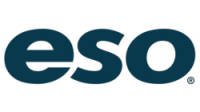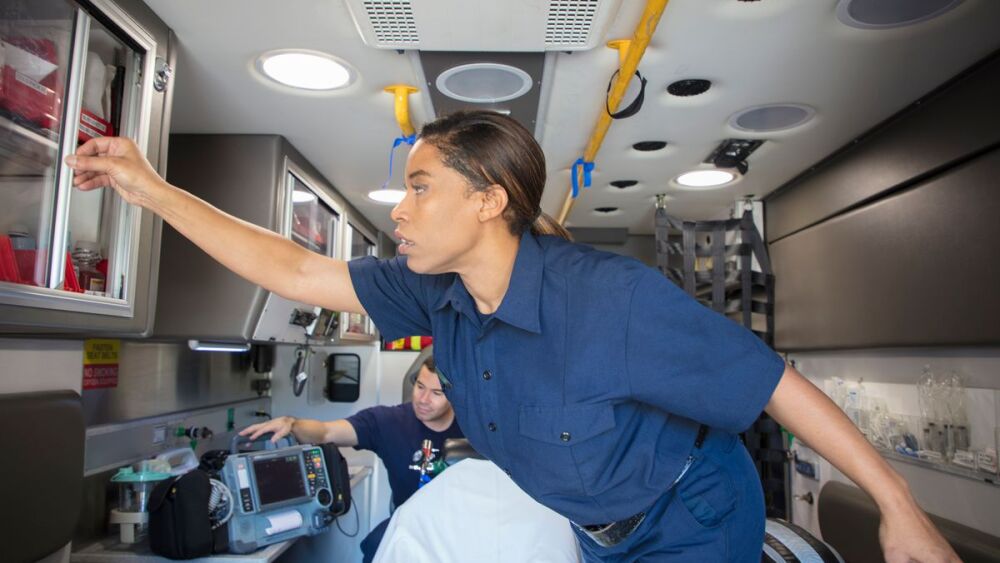“When we waste dollars through inefficient practices, we are not being good stewards to our patients, our taxpayers or to our EMS mission,” writes Jonathan D. Washko. A reliable, effective and efficient inventory management system can help an organization reduce costs, limit waste, improve employee relations and limit liability.
Learn more in the ESO-sponsored eBook, “Achieving operational efficiency”
Attempting to manage EMS medical supplies without the benefit of realistic demand forecasts is like building a house on a weak foundation. It’s bound to fail and can wreak havoc on your EMS agency.
Without a strong inventory management system, paramedics and EMTs are more likely to run out of the supplies they rely upon to do their jobs. While they scramble to locate stock, precious time is lost, and frustration and dissatisfaction build. On the flip side, in an effort to prevent stockouts, agencies may overstock medical supplies. Unfortunately, finding a specific item within overstuffed cabinets and bags can be difficult and may cause breakage and waste. In addition, the risk of a medication expiring is much higher when too much is ordered.
The best way I’ve found to avoid these pitfalls is to build a strong foundation for your inventory management system – one that can be transformed into a useful framework for making smart inventory management decisions.
Data-driven forecasting
Inventory forecasting (also known as demand planning) utilizes historical data on usage, including peak periods, to predict future inventory requirements. It’s important to consider seasonal trends for items that’s use is related to normal weather patterns, such as albuterol, which tends to be administered more frequently in the spring and summer, when pollen and humidity are at their highest levels. Forecasting the supplies necessary for future use should also factor in replenishment data, such as availability, timing and delivery patterns.
But it’s not just the end result that is beneficial; the demand planning process itself offers meaningful insights. While it is important to align forecasts with organizational goals (for example, lean inventory management initiatives), the goals themselves become more realistic and achievable when informed by accurate forecasts.
Supply chain challenges, such as delivery delays and sporadic shortages, should factor into the forecast equation and this quantification may provide insights that lead to beneficial decisions. For example, after exposing delivery and availability issues with a particular supplier, a more reliable source may be identified.
Improved EMS inventory management forecasting can also create operational efficiencies as well as substantial cost savings via a reduction in wasted supplies and inventory carrying costs.
Using forecast data within par levels is the backbone of a structured framework for managing EMS medical supply inventory. The idea is to maintain inventory between the minimum and maximum par levels, using the minimum as the reorder point and the safety stock as a buffer until the items are replenished.
Setting par levels
Step 1. Gather the historical data down to the item level with respect to usage and replenishment rates and patterns. Then, put it all into a single spreadsheet; or possibly one for each major category of supplies.
Step 2. Determine the average, minimum and maximum daily usage based on that data. Many agencies experience fluctuating call volumes based on cyclical and occasionally unpredictable influences. Although it varies by community, these contributing factors may include holidays, public events, dangerous weather conditions, influxes and exoduses of residents, and (of course) pandemics!
Step 3. Set the average and maximum lead times (the period between ordering and receiving an item) as well as the safety stock, which is derived from both the daily usage and lead time figures. Consider scenarios in which weather affects transportation or when supplies prone to shortages are backordered.
Step 4. Set a reorder quantity factoring in:
- Volume discount price points: Ordering at higher quantities can be cost effective, assuming other considerations (such as shelf life or shelf space) don’t outweigh the savings.
- Carrying costs and tolerance: Some agencies have budgets that require an especially lean approach to inventory, while others may prefer to carry more excess (for example, of epinephrine) to be on the safer side. It’s the difference between setting a higher max par or a more conservative one.
- Desired buying schedule or delivery frequency: Where staff availability or other considerations make a specific day of the week or frequency preferable for either purchasing or receiving, you may want to adjust par levels to accommodate them.
Step 5. Use the above figures to calculate par levels per the below formulas:
The payoff
While there’s no doubt that forecasting demand and setting par levels based on as much actual data as possible will be more time consuming than basing them on educated guesses, there are so many benefits to reliable forecasting that it is well worth the extra effort. In a nutshell, better data translates into faster, smarter inventory decisions that improve operations, save money, reduce waste, and improve accountability.
Equipped with more accurate demand planning, your agency can better manage the medical supply logistics lifecycle. Utilizing a par level framework for procurement decisions takes the guesswork out of them so you can maintain steady and optimal inventory levels. This means EMS providers will have the supplies they need, readily available when and where they need them. In turn, EMS providers and staff will be more efficient and less frustrated.
Because stock levels remain under control, your agency will rarely need to rush an order, which means you’ll spend less on expedited delivery charges. Avoiding the overstocking of perishable items will translate into less waste. Improving efficiency and minimizing staff and vehicle downtime can enable you to do more, with less. Finally, with greater accuracy and reliability, you can provide better reporting for improved internal and external accountability, including better aligning stock levels with organizational goals and easing regulatory compliance.
Of course, there’s no reason to simply take my word about all the reasons you should take the time to improve your demand planning. A handful of metrics can provide ample proof of its impact.
Two key performance indicators are inventory days on hand and inventory turnover. When either is too high or too low, better inventory management should produce movement in the desired direction.
These next two metrics may provide the clearest evidence. Annual expedited delivery charges should drop because the better inventory is managed, the less reason there will be to rush resupply orders. Similarly, an inventory variance report should reveal lower shortfalls due to higher rates of medication utilization (fewer expired meds) and less item damage and loss.
Inventory software makes it work
Still, it’s tough to keep track of the par level and expiration status of every medical supply when relying on something like a spreadsheet. That’s where inventory management software can make a big difference. Because when forecasts are accurate and data is delivered in a way that truly streamlines decision-making, the savings add up.
Specifically designed to help EMS agencies regain control of their medical supply inventories, software like ESO Inventory provides visibility into all locations and improves your inventory position.
It starts with a bulk import of par levels, rather than manually entering each one. This saves time and prevents mistakes. By filtering items by par status, managers can more easily take on bulk tasks, such as ordering upon review of all below-par items. Purpose built EMS inventory software is also smart, making suggestions upon the completion of an action to facilitate fast responses to key indicators. For example, ESO Inventory suggests a transfer or new order when an item falls below par. It also provides an Action List, which is a bird’s eye view of item stock at each location with related par, expiration, stocking and replenishment statuses.
With real-time insight inventory management software your staff can make timely, well-informed ordering decisions and can assure that critical medical supplies will be available to emergency care providers, whether they’re at the station or out on a call.















